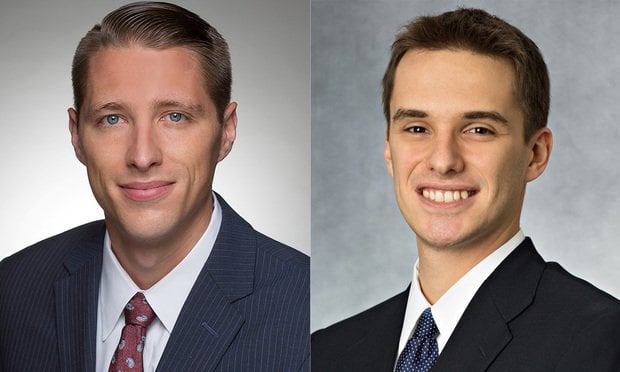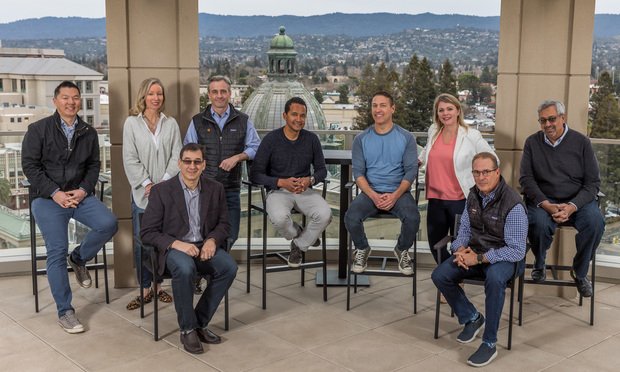Though real estate activity and fundamentals differed in 2011 between the Dallas/Fort Worth and Houston regions, one theme was pretty consistent: Texas, for the most part, has been insulated from the economic woes experienced in other parts of the country. On the other side of the coin is the Phoenix metro region, commonly considered one of the ground zeros of the financial crisis. Though Phoenix hit the bottom and has been bouncing along it in recent years, real estate experts in the desert region say they're feeling pretty optimistic about 2012.
According to experts in the DFW area, 2011 was stronger than 2010, with higher absorptions across all real estate sectors. And, according to these same experts, 2012 should be even better.
Creighton Stark, an SVP with Colliers International, says investments should more than double from 2011. "We're seeing an influx of capital into our market from both overseas and domestic sources," he remarks. "It's been very positive." Stark predicts that the main buyers will be private REITs and equity partners that are looking for assets with creditworthy tenants and long-leases.
In the area of office leasing, Stream Realty Partners' SVP and comanager Sarah Erickson says strong absorption will be a hallmark of 2012, with class B office space being the beneficiary of the activity, especially in the Richardson and Dallas North Tollway submarkets. The reasons? First, long-term construction on I-635 is driving tenants into adjacent submarkets. And second, rents in class A buildings are increasing. "Tenants are getting priced out of product in the West Plano/Legacy submarket," Erickson explains. "That submarket is at around 9.9% vacancy and there aren't a whole lot of options, so tenants are looking elsewhere."
Adding to the mix is that companies are now making decisions as it pertains to new or expanded space. Johnny Johnson, a Cassidy Turley executive managing director and principal, explains that larger companies are in a stronger cash position than they've been in a while, and now "find they have to move forward with plans and long-term decisions," he comments. Given this, he notes, the office sector will likely see at least 3.6 million square feet of positive absorption in 2012.
Will the tighter space mean more development? Certainly there have been announcements of new projects; in recent weeks, for example, Estein & Associates in partnership with developer KDC unveiled plans to develop a 400,000-square-foot office building in Victory Park, just north of the CBD. The kicker in construction, however, is that developers prefer projects to be at least 60% preleased before breaking ground, says Erickson.
Johnson notes that construction will depend on available funding. "Financing is still challenging, so we're not going to see much spec development in the next year," he says. "This is a good thing, though. It helps us keep things in check."
Meanwhile, 350 miles or so to the south, Houston boasts high absorption and low vacancies, much like the D/FW area. One main question, however, is how much investors will pay for real estate assets in 2012. In December 2011, Canadian investor H&R Real Estate Investment Trust paid $442.5 million for the 844,763-squarefoot Hess Tower, in what was dubbed one of Houston's largest transactions ever.
But experts aren't seeing similar prices or inflated values in 2012. "We'll certainly see more competitive pricing for core properties," says Jim Casey, city leader and senior managing director with Trammell Crow Co. But in other non-core areas in which value-add and opportunistic plays are present, pricing will be significantly lower, he comments.
Regardless, look for more investment dollars to flow into Oil City. "If you talk to institutional investors of commercial real estate, all of them have had a bicoastal strategy for many years," explains Chip Clarke, Transwestern's president for the Gulf Coast and Mountain regions. But that strategy is starting to include Houston. "We're seeing investors we've never seen before coming into the area," Clarke says.
Part of the reason behind the interest in Houston is underlying fundamentals, including job growth. "The expectations are that in 2012, we'll see similar job growth and developments will occur," Casey remarks. Don't worry about overbuilding, however, since the "capital markets are still cautious from both the lending and equity investment standpoint."
As with any region, some submarkets are stronger than others. The Energy Corridor continues to attract the lion's share of leasing and this will continue in 2012. Another submarket of interest is the Woodlands, the approximately 6,000-acre, mixed-use community located 30 miles north of the CBD on Interstate 45. In June 2011, Exxon Mobil announced the development of a 385-acre tract of land there that would house its consolidated offices. "There are a lot of terrific midand long-term prospects for that region because of that announcement," Clarke says.
Though Casey and Clarke like what's going to happen in 2012, both caution that much of the predictions are based on macro factors. "As with anything, there's always the caveat of 'barring some big world event,'" Clarke says. "There's some caution with regard to what's going to happen in the election year and how things will shake out." Still, "I think people feel pretty darn good about Texas in general, and Houston in particular," Clarke says.
Moving out of Texas, Phoenix had a bright spot in 2011—the industrial sector—and experts expect even more growth in 2012. What impressed CBRE senior vice president Pat Feeney about 2011 was that a good chunk of the absorption—around 60%—was by smaller users taking down 200,000 square feet and less, rather than the million-square-foot tenants. "That's a healthier number than we saw in 2010," Feeney remarks. "The base is broader and it involves all the submarkets."
Continued economic woes in California will likely drive more users to Phoenix this year, predicts Zach Aulick, vice president of research with Cassidy Turley BRE Commercial. As Arizona doesn't tax on Internet sales, "we'll continue to see companies from California, and perhaps other states as well, coming to Arizona," Aulick predicts.
Though much of what will go up in the coming year will be build-to-suits, the market is slowly moving toward that tipping point in which spec development might make sense. Feeney explains that users coming to the market 24 months ago looking for 300,000 square feet had their pick of buildings. "Fast-forward to today, and one building is available," he says. "If you're looking for 200,000 square feet, there are only two of those available." Feeney says the market isn't necessarily strong enough to justify a whole lot of spec development, but "we're much closer than we were 18 months ago."
© Touchpoint Markets, All Rights Reserved. Request academic re-use from www.copyright.com. All other uses, submit a request to [email protected]. For more inforrmation visit Asset & Logo Licensing.






